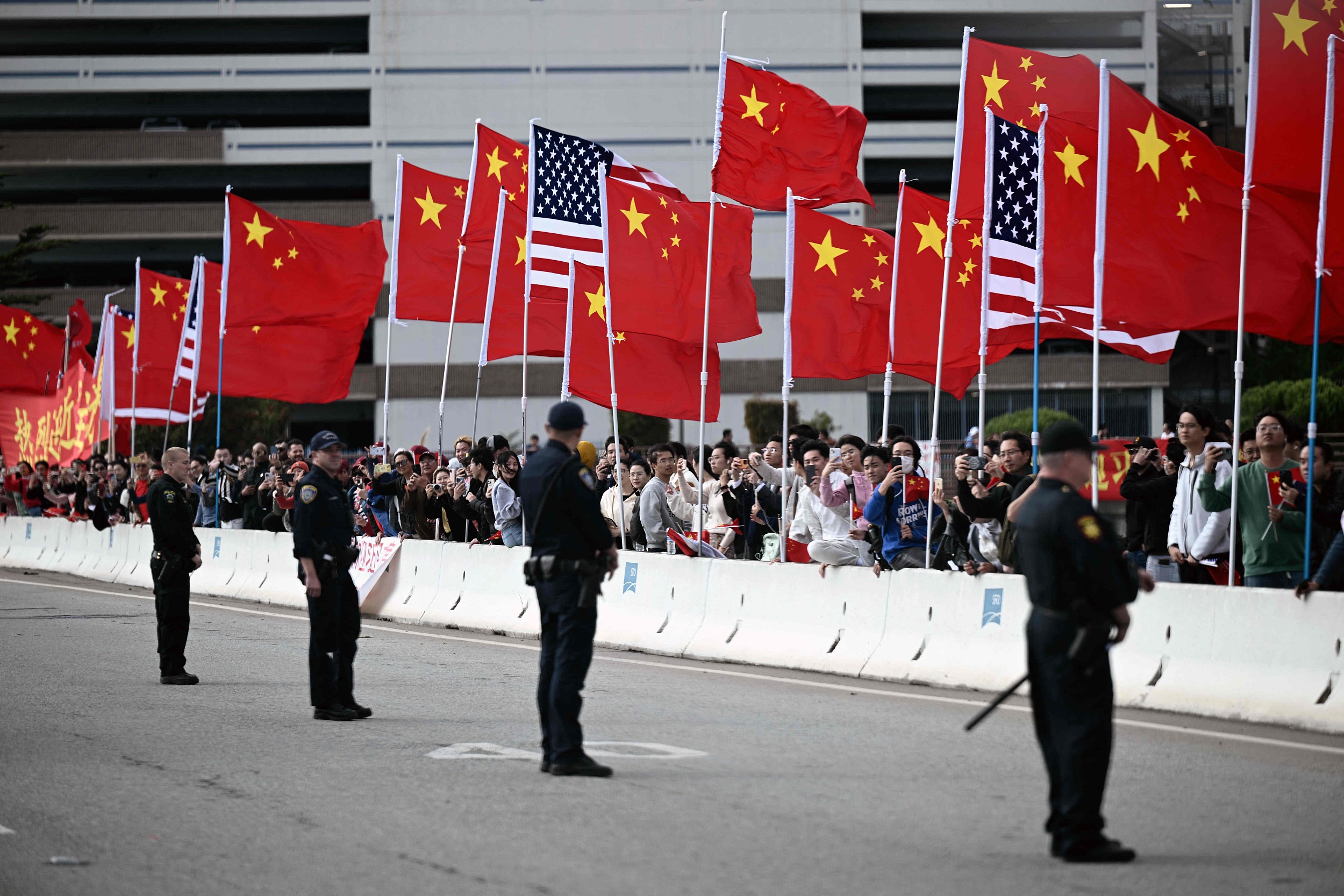The Right Way for China, U.S. to Get Along

On November 14, the audience warmly welcome Chinese President Xi Jinping to attend the 30th?Asia-Pacific Economic Cooperation (APEC) Leaders' Meeting held in San Francisco, U.S. (PHOTO: VCG)
By GONG Qian
On November 15, Chinese President Xi Jinping met with U.S. President Joe Biden at the Filoli Estate, San Francisco. The highly anticipated meeting produced many deliverables in such areas as political affairs and foreign policy, people-to-people exchanges, global governance, and military and security.
They discussed the right way for the two major countries to get along with each other and identified the joint responsibilities of China and the U.S. as major countries. Together, they embraced a future-oriented San Francisco vision, and pointed the way and drew a blueprint for the sound, steady and sustained growth of China-U.S. relations, Chinese Foreign Minister Wang Yi told to the press after the meeting concluded.?
Signal of stabilized relations
The meeting sent a signal of stabilizing China-U.S. relations to the world, Gong Ting, an associate research fellow at the Beijing-based China Institute of International Studies, told Science and Technology Daily. As China and the U.S. are the world's two largest economies, their relations are not only about the two countries and their people, but also about world peace and development. Therefore, the meeting played an irreplaceable strategic role in guiding bilateral relations and injected more stability and certainty into world peace and development, Gong added.
The very fact that the two leaders sat down face-to-face to exchange their concerns and worries certainly is a positive step in the right direction, said Denis Simon, a distinguished fellow at the Institute for China-America Studies in Washington, D.C., in an exclusive interview with S&T Daily.
According to Simon, the decision of the two presidents to meet before the Asia-Pacific Economic Cooperation (APEC) Leaders' Meeting reflects three considerations.
First, they are trying to build upon the good will established from the increased visits by senior officials from both countries.
Second, both leaders have recognized that the continuing downward spiral in bilateral relations benefits neither country and could lead to serious conflict without adequate guardrails.
Last, both China and the U.S. are trying to deepen and expand their influence in the Asia-Pacific region and the APEC meeting is a good platform for highlighting that both countries can work together to promote peace and prosperity across the Pacific Rim as well as the rest of the world.
People-to-people exchanges matter
During their meeting, the two leaders reiterated a commitment to increase the number of flights between the two countries. This will meet the needs of different communities from both sides such as international students, visiting experts and scholars and business executives in the post-COVID-19 era, said Gong.
Actually, the number of direct flights between China and the U.S. is increasing. According to Simon, the hope in both countries is that the restoration of more flights will support the increased flow of people and trade between the two countries. This will be a booster shot for tourism, for cultural and educational exchanges, and for business travel.
“People-to-people engagement is the best way to restore friendship and trust between the citizens of both countries, and it is the best way to facilitate science and technology cooperation—allowing more people working in science and engineering to travel for meeting counterparts, attending conferences and seminars, and simply getting to know the cultures and societies of their partners,” said Simon.
Continuing talks and pragmatic actions
“Talk, talk, and keep talking,” Simon said about furthering mutual understanding and cooperation. The best path forward for the U.S. and China involves a renewal of their high-level dialogues, continued on-going communication between their leaders, and expanded engagements involving all segments of their respective societies, said Simon.
According to Simon, the U.S. and China need some quick wins and key successes to serve as support for rebuilding trust and confidence. “These could come from a series of new initiatives with explicit shared benefits to both countries—more cultural exchanges, growing tourism, a series of new science and technology initiatives, and expanded student engagement. If there is a will, there is a way,” he said.
In Gong's opinion, it is imperative for the two sides to implement the consensus reached between the two leaders in Bali last year and in San Francisco this time, so as to further promote the sound, stable and sustainable development of bilateral relations.






